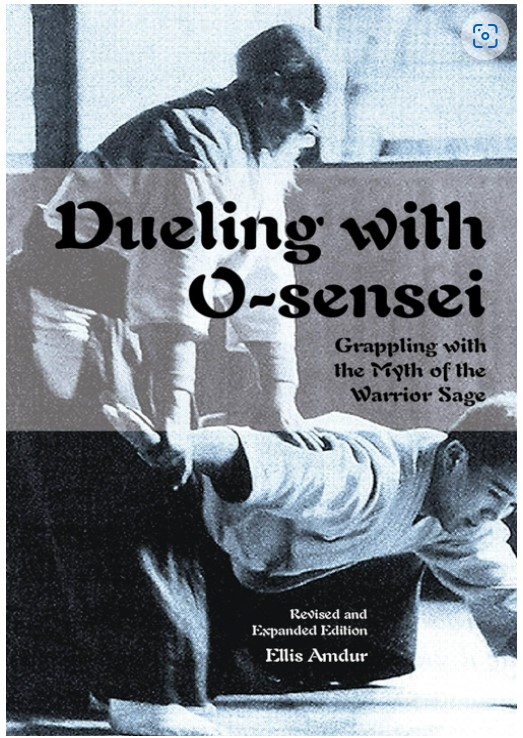Ellis and I go back nearly twenty-five years, to when we were still young and even more foolish than now. We met at the Aikikai’s headquarters dojo and hit it off, both of us not entirely sure what we were doing or where we were going, only knowing that the martial arts contained something that we both felt was immensely absorbing and would be of great value. We trained together in aikido regularly for a couple of years. Gradually, as happens, our work and training schedules diverged a bit, and we didn’t see as much of each other.
At one point (and Ellis tells this story in an essay published in Koryu Bujutsu, edited, in fact, by my wife Diane), I happened to learn that several classical martial arts were being practiced at a certain dojo over near where Ellis was living and mentioned this to him. He went to observe practice and wound up falling into training with a man who must surely be one of the most interesting and unique people teaching and training nowadays–as close to a modern bushi as I’ve ever met or seen. Later on, he also began to train in an art that I did (albeit with a different teacher than mine), and we used to compare notes. Years later, I began training under his teacher and we were able to renew and deepen our friendship together.
Naturally, we used to discuss, argue, share stories, tell lies, and have a lot of fun doing it. It was even better after we got back together because it meant we had a number of mutual (as well as differing) experiences and technical perspectives, and that just helped add some savor to the mix. At times it was a blend, sometimes it was a clash, but sharing a wonderful teacher, we were able to bring something to our training that enriched and enlarged us both and, I’d like to think, help make our dojo and the ryu better as a result. I know it helped a lot in my case.
When Ellis began writing his series of articles for Aikido Journal, which my wife was then editing, I read them avidly (I return to several of them regularly). Several of his articles led me to nod, smile, or laugh, others made made me frown, or shake my head in disbelief. Some I found infuriating.
In this way, I suppose, the essays in this book are a lot like Ellis himself: They amuse, anger, make one want to dance or shout out loud. Above all, they challenge and cause me to reflect deeply on my training and my life.
You can’t ask for better than that.
Read an excerpt from this book: “Hiding in the Shadows of the Warrior” and “Setsuninto–Katsujinken”.

